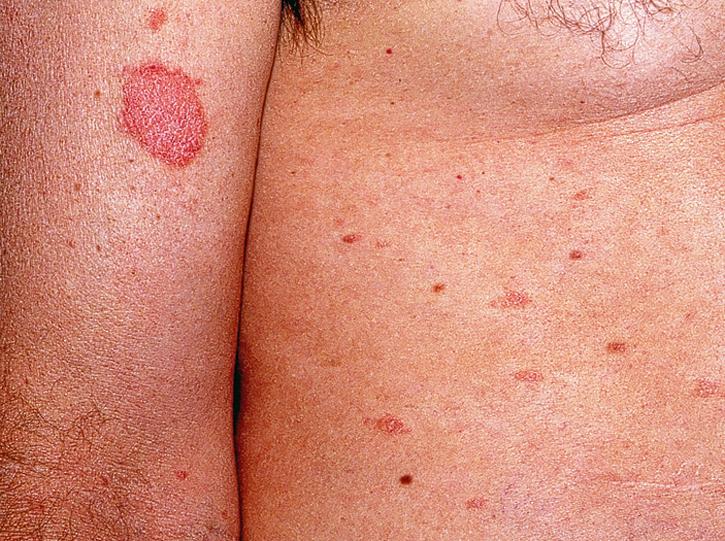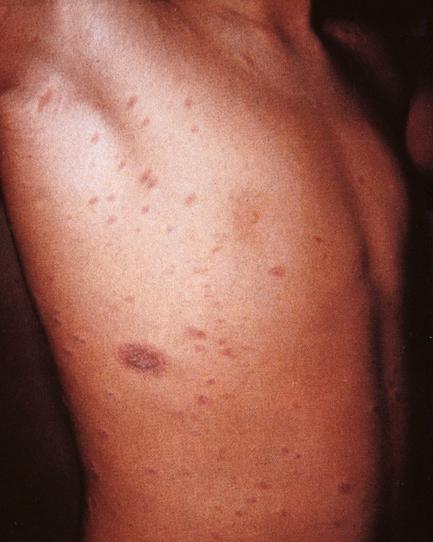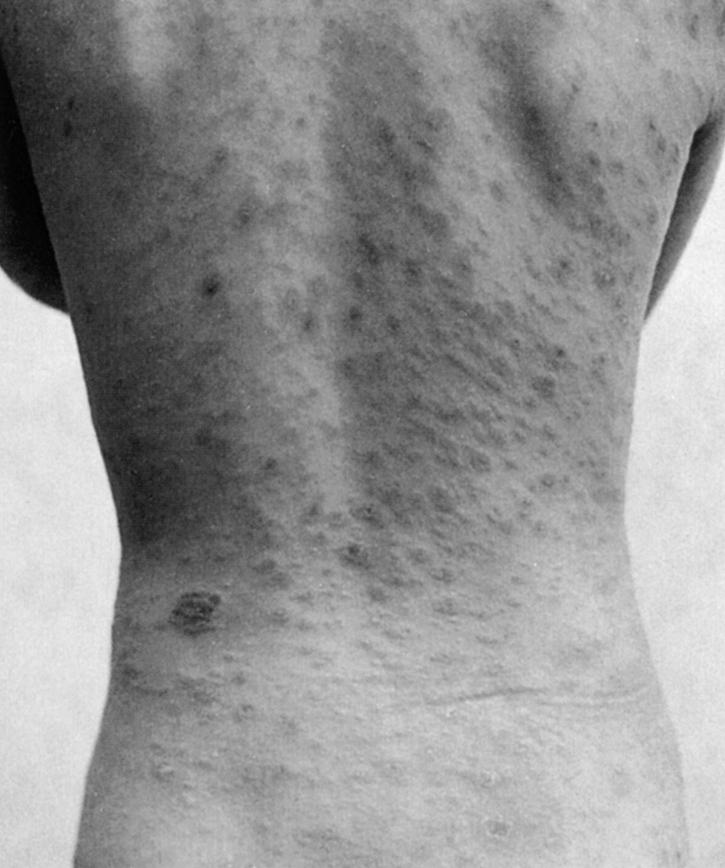Physical Address
304 North Cardinal St.
Dorchester Center, MA 02124
Patients with this rash often seek acute medical help because of the worrisome sudden spread of a rash that began with one local skin lesion. This “herald patch” may develop anywhere on the body, but it is typically on the trunk and appears as an ovoid, 2 to 6 cm in diameter, mildly erythematous and slightly raised scaling plaque with a collarette of scale at the margin ( Fig. 177.1 ). Some patients may be oblivious to the herald patch if it is on the flank or back. There is no change for a period of several days to a few weeks; then the generalized rash appears, composed of crops of small (0.5–2 cm), pale, salmon-colored, oval, raised macules or plaques with a coarse surface surrounded by the same rim of fine scales as the herald patch ( Fig. 177.2 ). The distribution is usually truncal (face, hands, and feet being spared), with the long axis of the oval lesions running in the planes of cleavage of the skin (Langer lines, which are parallel to the ribs), giving it a typical “Christmas tree” appearance and making the diagnosis ( Fig. 177.3 ).



The condition may be asymptomatic or accompanied by varying degrees of pruritus (25% of patients have mild to severe itching). No systemic symptoms typically are present during the rash phase of pityriasis rosea (PR). The lesions will gradually extend in size and may become confluent with one another. By its natural history, the rash persists for 6 to 8 weeks and then completely disappears. Transient worsening of the rash or a second wave of lesions is not uncommon until eventual spontaneous resolution of the eruption. Recurrence of the condition later in life is rare.
Pityriasis rosea can have a distinctly different appearance on patients with brown or dark skin. The herald patch, as well as the diffuse rash that follows, may have a gray, dark brown, or even black appearance. There may be either hypopigmented or hyperpigmented areas visible after the lesions resolve.
Become a Clinical Tree membership for Full access and enjoy Unlimited articles
If you are a member. Log in here